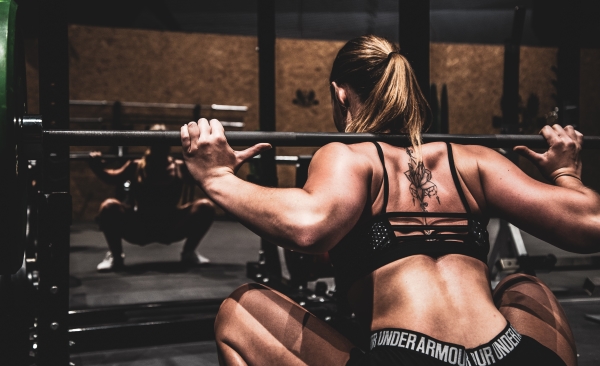 Photo by Sven Mieke
Photo by Sven Mieke
Some people choose home gym equipment to be their primary workstation – while others have it for extra workouts, keeping their main gym for the bigger sessions. Whether you are thinking of a fully functional multi-gym, or a simple setup with the main exercises, there are several factors to consider.
I’ll make the assumption that the single biggest factor – the exercises offered – is top of your list. If you are still wondering which home multi gym to buy, then there are many more things to consider. The seven questions below all tackle small, yet important aspects of buying home gym equipment.
#1 – What Safety Features Does This Multi-Gym Have?
You’ll likely be working out alone, and so safety features take on a new level of importance. At the top end, you could opt for a Smith Machine setup, where the weights are held in place for you. This is not always the most flexible equipment. Alternatives include safety bars, and the ability to insert pegs in the event that you can’t complete a rep.
Safety also involves the overall robustness of the build. If a gym offers a lot of weight, and looks flimsy, then you should check feedback from previous buyers before you go ahead and buy.
#2 – Will This Machine Adequately Cover Leg Days
It can be easy to see a leg press and mentally tick the box. Instead your focus goes to the chest and arm exercises. If you want your home multi-gym to be genuinely useful, I recommend you look into the leg workouts a little deeper. Squats, presses and more are all going to have their days, if you buy a gym which lacks in this area – then it might involve an unwanted trip to your local gym instead.
#3 – What Kind of Flooring Do I Need?
The time to think about the floor is before you buy and assemble your home gym. Carpet is a disaster, you’ll need a surface which will not cave in under the weight and is easy to clean. I recommend looking into modular mats. Many of the mats will not wear, with some of them right at the base taking a lot more wear than average. Modular flooring will allow you to replace just one or two parts, without needing to buy a brand-new floor.
#4 – Can I Add Weight to the Stack?
At the lower price point, you’ll find gyms which rely on a single weight stack with pulleys that can’t be added to. You might be able to disassemble the gym, adding weight this way. I don’t recommend this. It can invalidate any warranties, and may not be safe.
If you plan on getting a quality home gym that will last, then consider the total weight you’ll need if your strength training goes to plan. This can be a lot more than you’ll use at first.
#5 – Is this Home Gym Easy to Assemble and Disassemble?
Putting up your home gym is often done with a friend or two. Some are much easier to put together than others. Again, feedback from previous buyers, both on the merchant’s sites and forums, will give you a lot of information about which models are the easiest.
One question that is very rarely asked is how easy is a gym to take apart. If you plan to move your home within the next few years, then this can be a real possibility. Save yourself a lot of pain by choosing a gym which can come along with you.
#6 – Are ‘No-Name’ Home Multi Gyms Better Value?
These days you can buy many gyms which are from unknown makers – especially online. These are often generic products, which people stick new names on. They are often much cheaper than the well-known brands. While it is possible to find decent quality equipment, often these products will be poor, or even dangerous. The makers might be waiting for negative reviews to build up, then start again with a brand-new name from the same foreign factory.
When you buy from a known brands like Marcy, Weider or York Fitness – you can be sure of quality, safety and (importantly) follow-up service should you encounter a problem. For me these are more than worth the extra cost.
#7 – How Noisy Will My Multi Gym Be?
This last question ties into the quality of #6 above, and relates to your choice of flooring too. Noise levels do vary by exercise, though as a rule, the long-running ‘names’ have already thought about this. If you are in an environment where this is a big issue, then vinyl weights can be a good choice. Once again, reviews from previous buyers on lifting forums can be worth checking out.